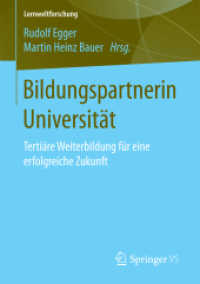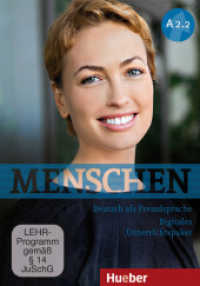- ホーム
- > 洋書
- > ドイツ書
- > Humanities, Arts & Music
- > Arts
- > architecture
Full Description
Text in English & German. When architects design a house for themselves, the often tense relationship between clients and builders is usually absent. That is why in many such buildings the architect-designers artistic stance and political position, preferences and antipathies, temperament and character are more pronounced than usual. Moreover the architectural theories, debates and trends of an epoch also leave their traces in them in a particular way. We encounter both attachment to tradition and commitment to the avant-garde, willingness to experiment and pragmatism, distinctive artistry and views shaped by the fact that a building is also a product of engineering. And last but not least, expressed in their houses are the personal life circumstances of the people concerned, or the messages the houses are meant to convey above and beyond their actual purpose: as a 'manifesto', as the 'self-portrait' of the architect, but also as an advertising tool or as a sign of connection to specific milieux or positions. Building for oneself has a special connotation under the conditionsof migration and exile. Among the most prominent examples are the private homes of Rudolph Schindler in West Hollywood (1921/22), Richard Neutra in Los Angeles (1932), Walter Gropius in Lincoln, Massachusetts (1937/1938), Ernst May near Nairobi (1937/1938), Bruno Taut in Istanbul (1937/1938), Ernö Goldfinger in London (19371939), Marcel Breuer in New Canaan, Connecticut (1938/1939 and 1947/1948), Josep Lluís Sert in Lattingtown, New York (19471950) and Max Cetto in Mexiko-Stadt (1948/1949). What expression could voluntary migration or forced change of location find in these buildings? To what extent do the architects other buildings differ from such 'homes of ones own' in a foreign country, to use an expression borrowed and modified from Virginia Woolf? The book is a collection of contributions by internationally renowned authors and examines not only the buildings themselves but also other aspects of the topic that have hitherto received little attention.








